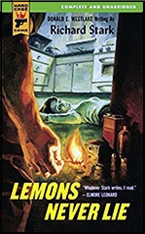REVIEWED BY DAVID VINEYARD:
FRANCIS BEEDING – The Seven Sleepers. Professor Kreutzemark #1. Hutchinson, UK, hardcover, 1925. Little Brown, US, hardcover, 1925.

“I don’t like it, Tom,” she said. “All sorts of queer things are happening just now, and Geneva is always full of international agents of every kind.”
“International agents!” I exclaimed. “But this is real life. I’ve got a British passport and I’m Thomas Preston of Jebbutt and Jebbutt.”
“Don’t make any mistake,” said Beatrice. “My chief has told me a good deal about these things. He used to be in the French Intelligence Department.”
“I don’t see how on earth it can possibly concern me,” I objected.
Thomas Preston is a British traveling man in Post WWI Europe (a Europe that has just received the first awakening call of what is to come with Mussolini) who finds himself in Geneva, home of the League of Nations (which features prominently in most of Beeding’s thrillers since the two men who wrote under that name both worked there), when his luggage takes a side trip. Not that he is averse to visiting Geneva where the beautiful Beatrice Harvel is working for the League, and as it turns out, for Henri Laval who Preston knew from the war.
Even before calling on Beatrice, Tom’s visit has been an interesting one, beginning with a strange little man approaching him as if he knew him, shoving a document in his hands, and then promptly being arrested, and then a letter from someone claiming to be Tom’s grandmother setting forth a meeting the next day. These are the things Beatrice doesn’t like and with good reason.
But no Englishman in the fiction of the between-the-war period, and few since the days of Anthony Hope and the Play-Actor, ever manages to ignore such intriguing mysteries, and in the shadow of John Buchan and Richard Hannay, it would seem practically treasonous. Somehow even when the saner, less adventurous heroes of Eric Ambler and Graham Greene came along, they still somehow never quite managed to ignore that siren song no matter how hard they tried.
Hero or feckless coward it seems impossible to avoid adventure in a British thriller.
The Seven Sinners is the work of Francis Beeding (John Leslie Palmer and Hilary Aidan St. George Saunders), best remembered today for the novel The House of Dr. Edwardes, filmed as Alfred Hitchcock’s Spellbound, and a fine mystery suspense serial killer novel Death Walks in Eastrepps.
In their lifetime, though, they were known as one of the most popular and purveyors of the novel of adventure and international intrigue. Along with the likes of Valentine Williams, they were authors of many stand alone novels (The Norwich Victims, The 2 Undertakers, Eleven Were Brave, The Five Flamboys, The Six Walkers, The Twelve Disguises, The Three Fishers, Nine Waxed Faces — if you note a theme here …) as well as the Colonel Alistair Granby series.
This is the first novel in the shorter Professor Kreutzemark series, and a good introduction to the pleasures of Beeding in thriller mode. Like their rival Valentine Williams, the team has some decided skills as a writers of this sort of thing, an eye for drama (keep in mind the plot devices that seem so familiar now were still pretty fresh then), and they probably knew the European scene as well as any British writers until Eric Ambler, especially Switzerland and the international environs around Geneva.
In short order Tom finds himself calling on his ‘grandmother’ who proves to be a a German Professor (He had a fine silky beard, neatly trimmed and of a bright gold, a broad forehead and well-set eyes, a straight nose, and a complexion almost feminine in its delicacy. At the first view he suggested an intelligent and sensitive philanthropist, reclusive in temperament.), and two other Germans (Uncle Ulrich and Uncle Fritz), and has killed a man in self defense.
It’s clear the three have mistaken Tom for someone else, and equally clear they are up to something shady involving German resurgence after the war and with the mysterious Seven Sleepers of the title financing their scheme.
Escapes and hurried journeys, near run things, dual identities, trusted allies (a refreshingly international lot in this case), betrayal, sudden set-backs, and a plot to attack London and Paris with the Professor’s nasty X-3 gas that could “…destroy all forms of vegetable or animal life within a radius of 400 square kilometres†are all the elements expertly handled by Beeding.
(As Richard Usborne points out in his study of popular fiction between the wars The Clubland Heroes, a good paper could be written on the use of deadly gas in the post War era, so great were the memories of its horrors, Bulldog Drummond and the Saint both encountering the nasty stuff along with just about every other hero.)
Old fashioned, true (…that fate should have permitted me to assist in foiling the powers of malice and disorder which in every age must be encountered and freshly overcome if men are to keep and to increase their inheritance), but half the fun lies in the familiar elements in these books and the skills with which the writer deploys them.
Though hardly in a class with Buchan or Yates, Beeding is still an entertaining read with a moment or two of the kind of ‘fine writing’ John Buchan’s literate thrillers instilled in the genre, with only an occasional need to wince at attitudes of another age, and superior plot spinning and settings. The boys knew their Europe both geographically and politically. (*)
Professor Kreutzemark, the silky bearded one, of course lives to scheme another day, and indeed Thomas Preston and he cross swords again in The Hidden Kingdom for the last time. No really good villain should be expected to give up the ghost that easy, and there isn’t much doubt that Beeding had a success as great as Valentine Williams Adolph Von Grundt, Clubfoot, in mind even if it eluded him for the Professor, only to find it with the clever and heroic Colonel Granby. Too bad, because Kreutzemark had his moments as mad German professors go, and a bit of style is appreciated in any field, perhaps especially villainy.
(*) One has to wonder that any reader of popular British thriller fiction was at all taken by surprise by the rise of Hitler and the rebirth of a dangerous Germany. The fiction of the era barely let the poison gas clear from the trenches before imagining fellows in Prussian haircuts, mad doctors, armaments dealers, and shady fellows in high finance plotting the next war, certainly after the mid twenties when Mussolini raised his ugly shaved head.
Granted, most writers were more subtle with Germany never quite spelled out, and Russia and the Reds came in for no small amount of plotting themselves (Sapper was about evenly divided between Germans and Russians sometimes rather remarkably managing to have both working together, but then politics was not his strong point), but it does seem at times as if anyone who bothered to crack a book would have been well advised to invest in a bomb shelter or leave the continent.

